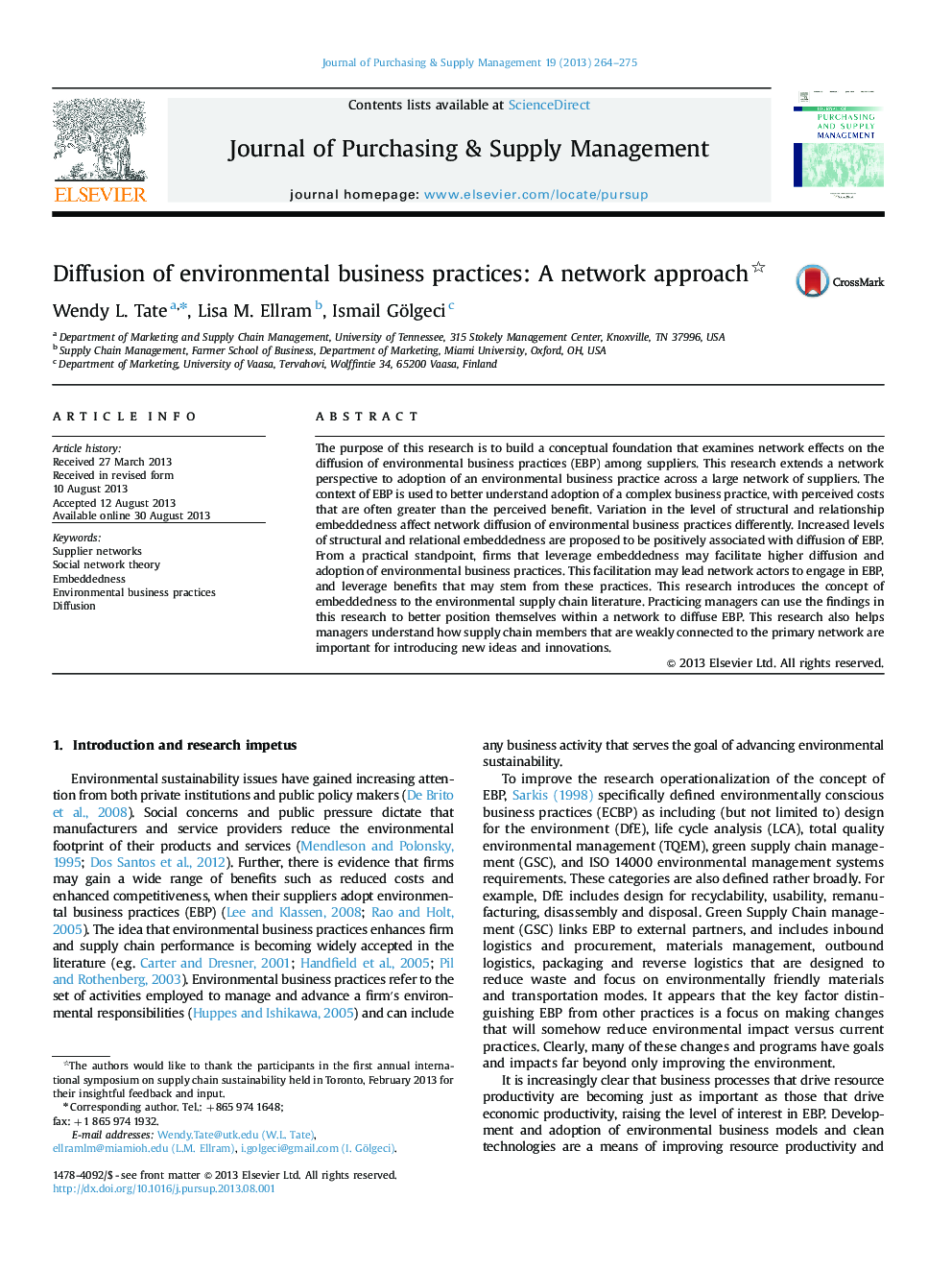| Article ID | Journal | Published Year | Pages | File Type |
|---|---|---|---|---|
| 1020918 | Journal of Purchasing and Supply Management | 2013 | 12 Pages |
•Builds a conceptual foundation that examines network effects on the diffusion of environmental business practices (EBP) among suppliers.•Extends a network perspective to adoption of an environmental business practice across a large network of suppliers.•Helps to better understand adoption of a complex business practice, with perceived costs that are often greater than the perceived benefit.•Variation in the level of structural and relationship embeddedness affect network diffusion of environmental business practices differently.•Increased levels of structural and relational embeddedness are proposed to be positively associated with diffusion of EBP.
The purpose of this research is to build a conceptual foundation that examines network effects on the diffusion of environmental business practices (EBP) among suppliers. This research extends a network perspective to adoption of an environmental business practice across a large network of suppliers. The context of EBP is used to better understand adoption of a complex business practice, with perceived costs that are often greater than the perceived benefit. Variation in the level of structural and relationship embeddedness affect network diffusion of environmental business practices differently. Increased levels of structural and relational embeddedness are proposed to be positively associated with diffusion of EBP. From a practical standpoint, firms that leverage embeddedness may facilitate higher diffusion and adoption of environmental business practices. This facilitation may lead network actors to engage in EBP, and leverage benefits that may stem from these practices. This research introduces the concept of embeddedness to the environmental supply chain literature. Practicing managers can use the findings in this research to better position themselves within a network to diffuse EBP. This research also helps managers understand how supply chain members that are weakly connected to the primary network are important for introducing new ideas and innovations.
